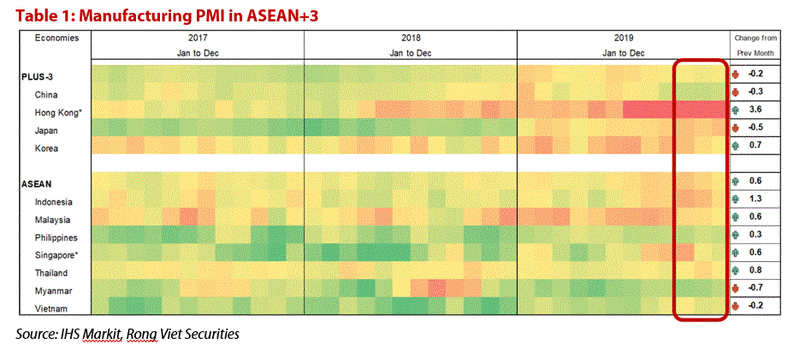Vietnam’s GDP growth in Q1 predicted to slow to 6-6.3%
The growth rate is significantly lower than the 6.8% growth rate recorded in the first quarter of 2019.
There is a high possibility that Vietnam’ s GDP growth to slow to 6 – 6.3% year-on-year in the first quarter, significantly lower than the 6.8% growth rate from the same period of last year, according to Viet Dragon Securities Company (VDSC).
VDSC also expected the number of international visitors will drop significantly from February 2020, while agricultural goods exports to China will keep decreasing because of tighter supervision at the land border control.
Meanwhile, Vietnam’s industrial production index plummeted 5.5% year-on-year in January, compared with the inter-annual pace of 7.9% last January.
During the last three months, many significant events took place in various areas such as trade agreements (US-China Phase One and USMCA), geopolitical risks (Brexit and Trump’s Middle East peace plan) and unexpected natural disasters (Coronavirus and Australia fires). Among those, the US-China Phase One deal and Coronavirus outbreak, originating in Wuhan, China, have impinged upon economic growth forecasts. The former delivered a silver lining for ASEAN+3 growth before the latter put some gloom on the global economic outlook and forced economists to reconsider revising down their forecasts.
The signing of the Phase One deal was going to push up expectations of economic growth for the 10 ASEAN member nations, as well as for China, Japan, and South Korea to 4.9% in 2020, according to the ASEAN +3 Macroeconomic Research Office (AMRO). In addition to resilient domestic demand, the easing trade tensions was a seen as a boon for regional exports, especially for semi-conductor products.
Hong Kong (China) and Singapore economies are now forecast to grow at a higher pace in 2020: 1.2% year-on-year from a negative rate of -0.2% year-on-year. Additionally, Japan, South Korea and even China’s economic growth forecasts have also increased compared with the preliminary numbers published at the end of 2019. This is reflected in the stock market performance of these countries during the last three months.
However, the unexpected spread of the coronavirus outbreak is now impacting economists’ forecasts for 2020. One of the issue is that this may delay the recovery of global trade as well as general economic conditions. While the economic growth of the region is likely to be revised down by 0.1-0.3%, regional stock markets are being under pressure due to rising concerns of health crises, geopolitical risks, natural disasters and political turmoil.
According to the experience from the Severe Acute Respiratory Syndrome (SARS) outbreak, starting in November 2002 before subsiding in the summer of 2003, stock markets suffered losses during the “rising concern” period. In China, retail sales, industrial production and fixed asset investment took a hit in the second quarter of 2003. Currently, the market has started revising down China’s economic growth forecast to below 6% in the first quarter of 2020, and is expecting further fiscal stimulus to be implemented by the central government in China.










